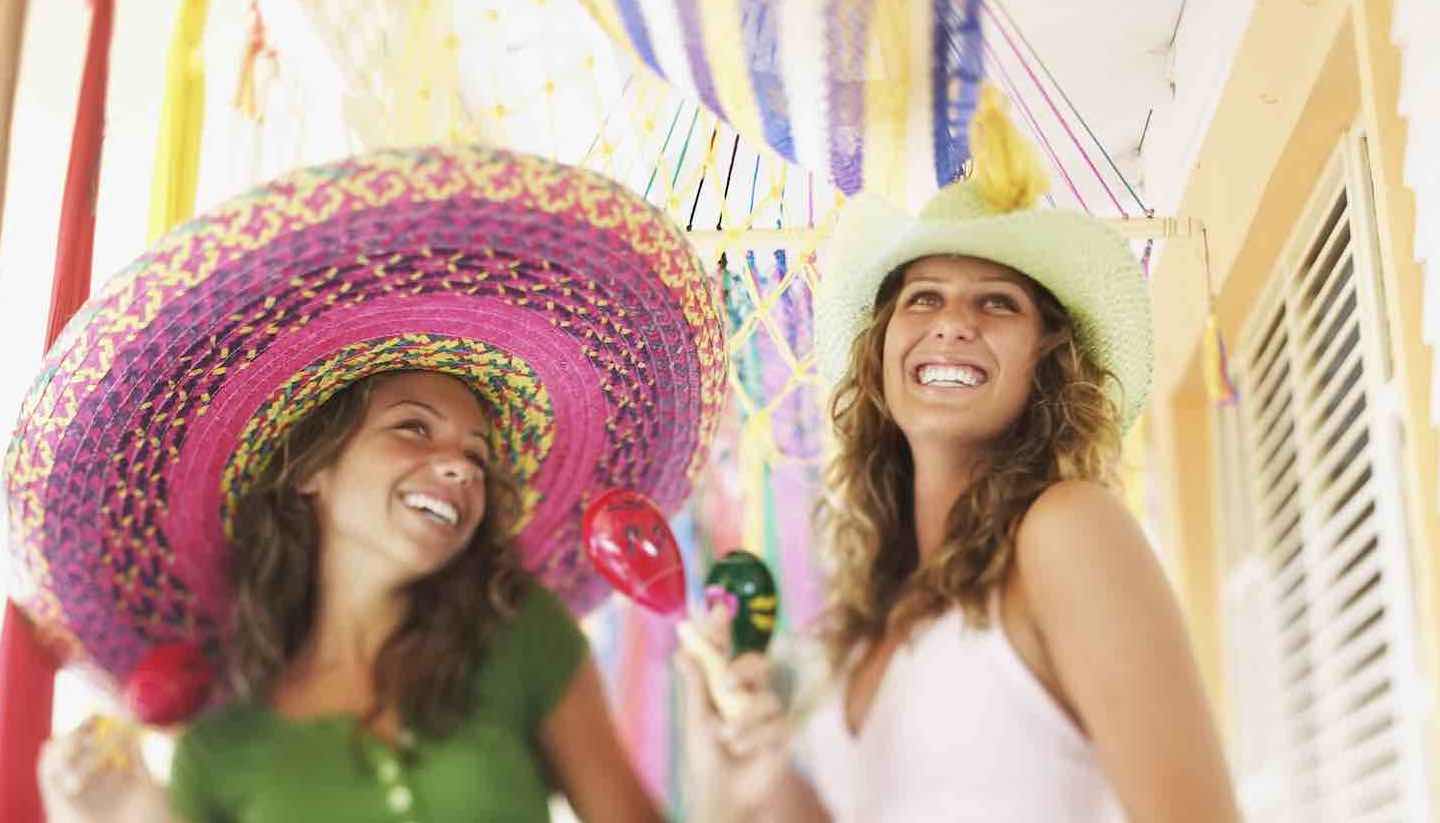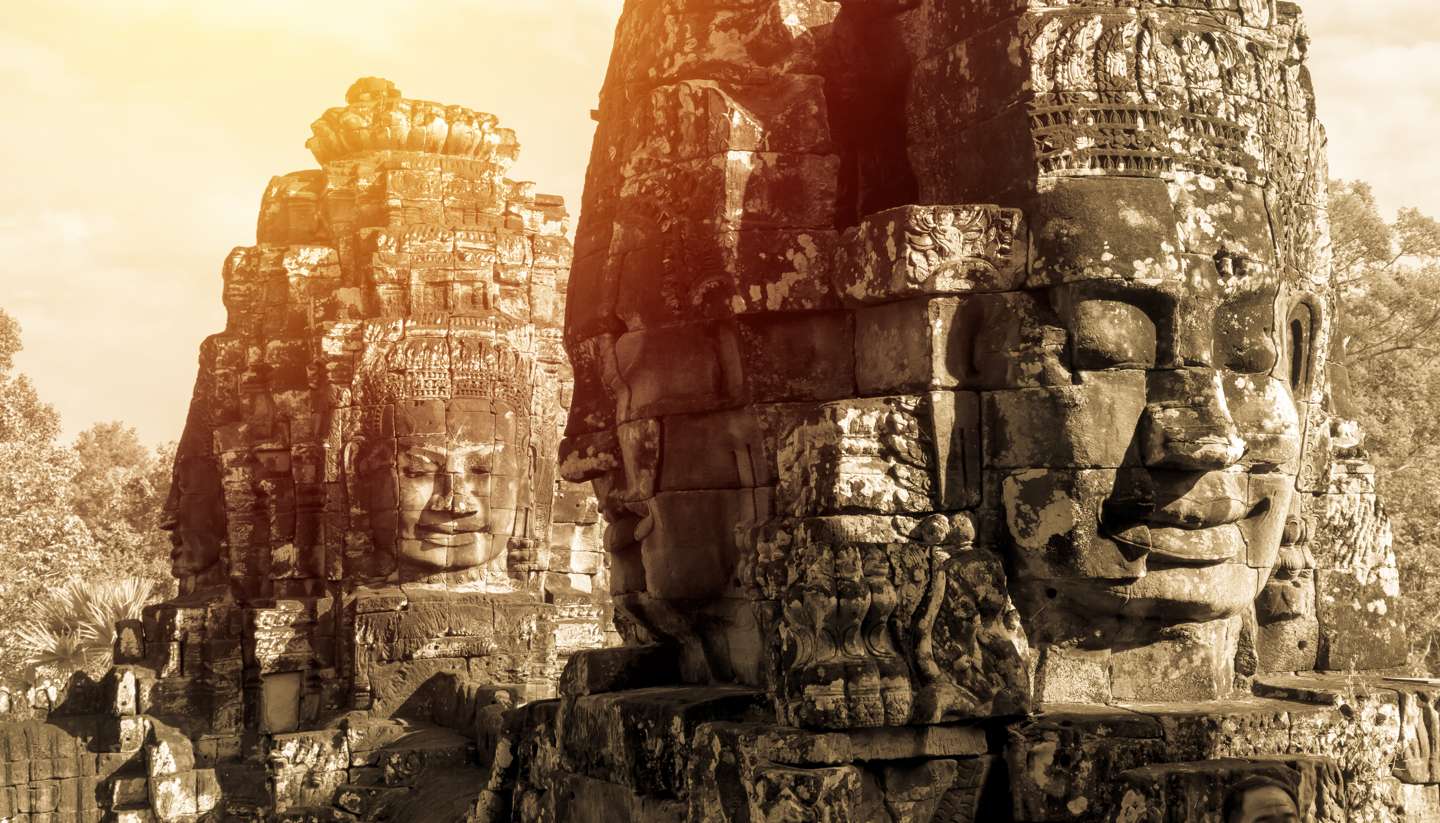Things to see and do in Mexico
Attractions in Mexico
All aboard the Tequila Express
Home to Mexico's most popular export, the town of Guadalajara in Jalisco state sits amidst fields of blue agave, the plant that is the basis of tequila. You can sample José Cuervo and Sauza's finest liquor at the distilleries, which can be reached via the Tequila Express, a lively tourist train that wends through agave fields whilst plying passengers with tequila.
Climb the mighty pyramids of Teotihuacán
Lying to the northeast of Mexico City, Teotihuacán grew to be the largest of Mexico's pre-Hispanic cities, constructing vast pyramids that surpass those of the ancient Egyptians. Its greatest building is the Pyramid of the Sun, standing at a height of 63m (207ft). It is joined on the Avenue of the Dead to the Pyramid of the Moon, which was originally part of a 'Moon Plaza'.
Commemorate the dead on Isla Janitzio
Janitzio, off Lake Pátzcuaro, is considered the most magical place to witness Mexico's Day of the Dead festival, with candlelit boats conveying Purépecha villagers to the tiny island where they decorate the tombs of their loved ones in an all-night vigil. Similar ceremonies are held from midnight on 1 November to 2 November (All Souls' Day) in cemeteries throughout Mexico; respectful visitors are welcomed.
Cruise the canals of Xochimilco
They may be a world away from Venice, but the beautiful, tree-lined canals and floating gardens of Xochimilco also draw romantic couples floating on brightly painted trajineras (a type of gondola, usually accompanied by mariachi singers). The canals are the surviving remnants of the Aztecs' original lake and waterways built over by modern Mexico City.
Dip into an ancient cenote
The limestone terrain of the Yucatán peninsula is peppered with deep, naturally formed sinkhole pools known as cenotes, ideal for swimming or diving. Some, such as Xlacah near the archaeological site of Dzibilchaltún, have ritual significance for the local Maya. Others, like Dos Ojos near Akumal in the Yucatán Peninsula, connect to extensive underground cave networks.
Discover Mexico’s living Maya culture
An enclave of traditional Maya culture in the Chiapas highlands, San Cristobal is known for its magnificent weaving: the intricately designed huipiles (loose-fitting blouse) woven and worn by local women open a window on Maya cosmology. San Cristóbal is surrounded by fascinating indigenous villages like San Juan Chamula and Zinacantán.
Dive off Cozumel
From Baja California's deep Pacific waters to the warm Caribbean Sea, Mexico offers some fine dive sites. The reefs surrounding Cozumel island are prized diving spots known for their tropical marine life and unusual coral formations. Other fine spots for diving or snorkelling include Banco Chinchorro coral atoll off Yucatán's Costa Maya, and southern Baja California and Zihuatanejo on the Pacific coast.
Experience the equinox at Chichén-Itzá
The ceremonial city of Chichén-Itzá was built over 1,000 years ago, but the Maya mystique still draws crowds. The best time to visit is during the spring or autumn equinox when shadows show Kukulcan, a Mayan snake deity, working his way up the steps. Other amazing but less-visited Maya sites include Calakmul in southern Campeche and Bonampak, with its polychromatic murals, in Chiapas.
Find your own personal beach paradise
Mexico boasts fantastic beaches along both coasts. On the Baja California Peninsula, many head for Los Cabos, to San Lucas and San José. On the Caribbean side, make for Isla de Mujeres, a slender island off the Yucatán coast fringed by crushed coral sands. Surfers wil be right at home on the Pacific coast, notably along the Costa Azul of southern Baja, as well as to Sayulita and Puerto Escondido.
Greet the dawn at Tulum
Seeing the sunrise over the Maya-Toltec ruins of Tulum, near Playa del Carmen, is well worth an early start. The intentionally top-heavy temples were dedicated to the setting sun, but if you want to avoid the evening crowds, explore in peace then take a pre-breakfast dip in the turquoise sea – the ruins virtually sit on the beach.
Party all night in Cancun
Hedonists should book a ticket to one of Cancún's 15,000-capacity beach parties, which go on all night and most of the day. Spring Break is the ultimate party period, when many American students come to town to let their hair down. For a more distinctively Mexican blowout, try the Pacific port of Mazatlán for Carnival (preceding Ash Wednesday).
Plunge into the mayhem of Mexico City
One of the world's biggest cities, Mexico's capital brims with historic and cultural attractions. Its gigantic main square is overlooked by the imposing Catedral Metropolitana and flanked by the remains of the ceremonial centre of the original Aztec city of Tenochtitlán. Of the city's myriad museums, the one must-see is the vast National Museum of Anthropology, covering Mexico's astounding archaeological legacy by region.
Saddle up on a Mexican ranch
Luxury guest ranches let you play at being a charro – Mexico's more dressy version of the US western cowboy – with action-packed days in the saddle and relaxing evenings of fine local cuisine and indulgent tequila tastings. Horseback adventures are available all over the country, from a few hours riding for beginners, to weeklong stays in a traditional hacienda, trekking deep into the countryside.
Scale the peaks of Popocatépetl and Iztaccíhuatl
The two snow-capped volcanoes east of Mexico City make for memorable hiking and climbing. Popo, though still active, is ringed by a series of indigenous villages and 16th-century monasteries, which are inscribed on UNESCO's World Heritage list. Popo is a relatively easy hike, but dormant Izta should only be scaled by experienced climbers with proper gear.
See sunset at sacred Monte Albán
Monte Albán, a sacred ceremonial site and centre of the 2,000 year-old Zapotec culture, stands on a hilltop overlooking the surrounding valley. Relive the majestic past glory of this UNESCO World Heritage Site by watching sunset from the top of one of its prominent pyramids. The Central Plaza, the Ball Court, and some of the tombs are also open to the public.
Shop for silver in Taxco
The ornate silver jewellery produced in Taxco is a joy to behold. Fortunes were made from the silver mines here in this stunning colonial town that is a delight to explore on foot. The first booty was sent back to Spain, but much wealth was also poured back into the Church of Santa Prisca and San Sebastián, jewels of Churrigueresque architecture.
Sink into a bubbling hot spa
Central America's ancient civilisations knew what was good for them and they made full use of Mexico's countless hot springs. Follow in the footsteps of the Aztecs with a relaxing spa break. Many luxury resorts boast a pampering spa, but natural hot springs offer a more authentic experience, with many in volcanically active central states including Puebla and near the colonial town of San Miguel de Allende in Guanajuato,
Tour the colourful talavera tiles of Puebla
For chic colonial-style, look no further than Puebla, one of the oldest and best-preserved cities in Mexico, nestled in the foothills of the central Sierra Madre. Many church domes and house walls are covered in talavera, colourful glazed tiles that are still produced by the town's artisans. In particular, don't miss the gorgeously decorated Patio de los Azulejos.
Tourist offices
Mexico Tourism Board in the UK
Address: 41 Trinity Square, Wakefield House, London, EC3N 4DJTelephone: (020) 7488 9392 or 00800 1111 2266 (brochure request line).
Website: http://www.visitmexico.com
Mexican Tourism Board in the USA
Address: Suite 11C, 400 Madison Avenue, New York, 10017Telephone: (212) 308 2110 or 1 800 446 3942.
Website: http://www.visitmexico.com




